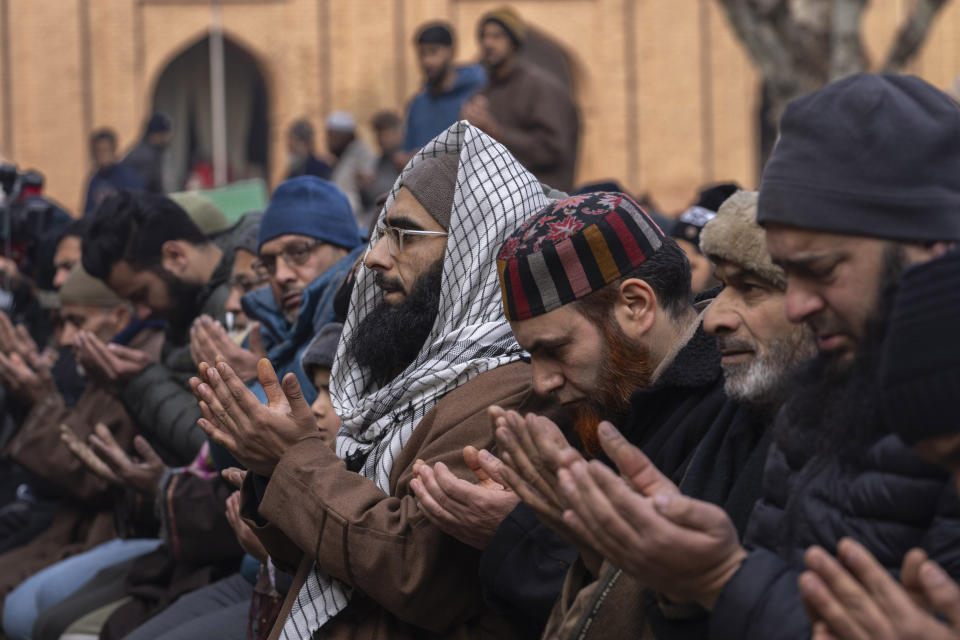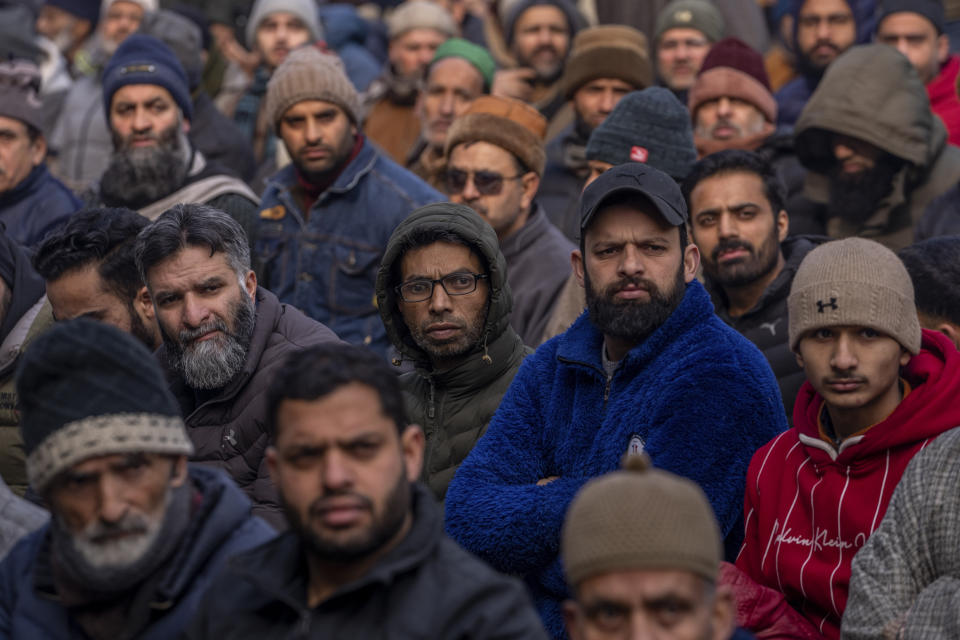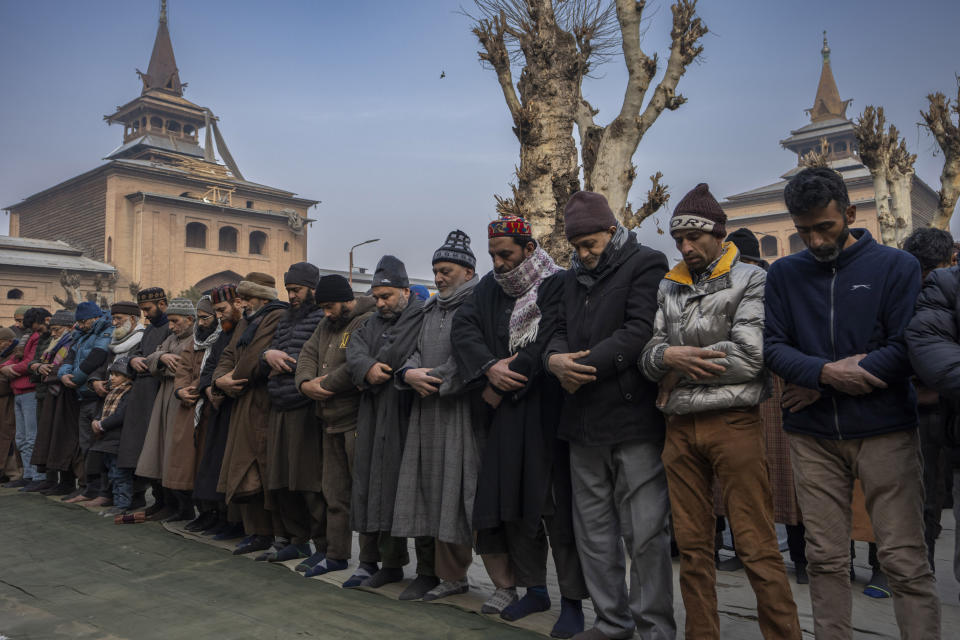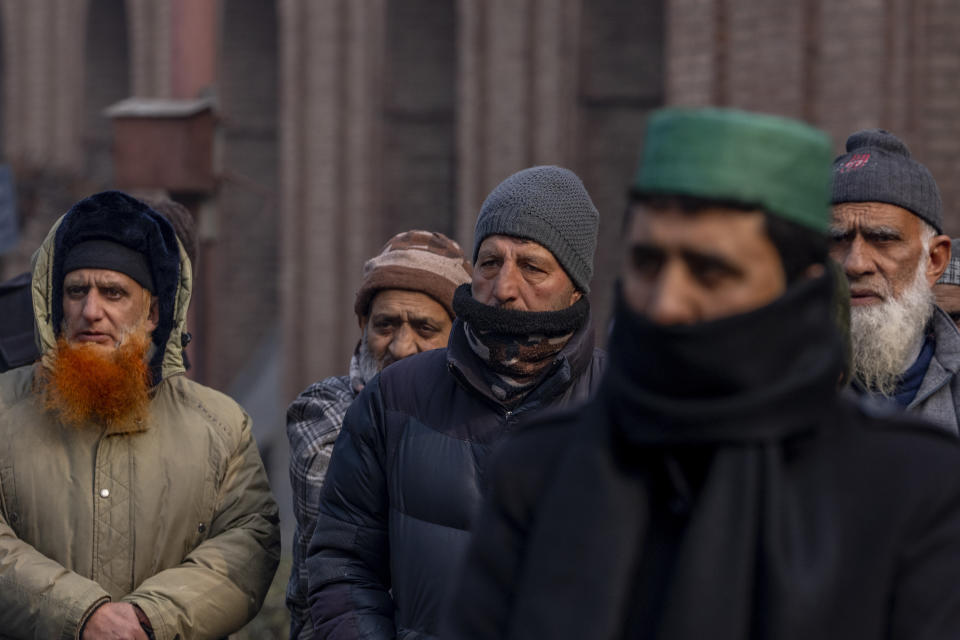Kashmir residents suffer through a dry winter waiting for snow. Experts point to climate change
SRINAGAR, India (AP) — A prolonged dry spell is sweeping across the Indian-controlled portion of Kashmir during the harshest phase of winter, leaving many people sick and farmers worried about impending water shortages.
Daytime temperatures have been high for about a month now, sometimes at least 6 degrees Celsius (10 degrees Fahrenheit) above the norm, according to Indian meteorological officials. The daytime temperatures usually hover around 5 Celsius (41 Fahrenheit) during this harsh winter period.
Nights, however, continue to be freezing, and have become piercingly cold amid the dry weather.
Officials say the region witnessed about 80% rain deficit in December, while there was no precipitation in January’s first week. Most plains in Kashmir have not received any snow while the upper reaches saw less than usual. Weather officials warn that the dry weather conditions are likely to continue for at least another week.
Experts link the weather shifts in Kashmir with broader climate change and global warming and warn that it could have a cascading impact on the region’s water resources and agriculture.
“We have witnessed in the last some years that the winter period has shortened due to global warming,” said Mukhtar Ahmed, head of the Indian meteorological Department’s Kashmir office. “It is not good for this place or for that matter any place as it adversely impacts multiple sectors, be it hydroelectric power generation, tourism or agriculture.”
The stunningly beautiful Himalayan region of Kashmir is divided between India and Pakistan and both claim the disputed region in its entirety.
Earlier this week, climate scientists confirmed that 2023 was the hottest year on record and projected that January will be so warm that a 12-month period will exceed the 1.5-degree Celsius (2.7 Fahrenheit) threshold for the first time.
Countries had set a goal of limiting global warming since pre-industrial times to 1.5 degrees at the 2015 Paris climate talks to avert the worst consequences of climate change.
In Kashmir, the winter has historically been divided into three parts. The first is Chillai Kalan, the coldest 40-day part of winter that begins in late December when temperatures drop considerably, leading to the freezing of bodies of water as well as water in pipes. The chances of snowfall are the highest in this phase and most areas, particularly the higher reaches, receive heavy snowfall.
The harshest phase is followed by 20 days of Chillai Khord, or little winter, and 10 days of Chille Bachi, or baby winter.
Ahmed said timely snowfall is crucial to recharge the region’s thousands of glaciers that subsequently sustain water resources for agriculture and horticulture, the mainstay of Kashmir’s economy. Over the years, experts have warned of the environmental fragility of a region where villagers largely depend on glacial runoff for water.
Farmers, who depend on winter precipitation for their agricultural activities, are distressed. In the last few years, some farmers have converted their water-intense paddy fields to fruit orchards due to water scarcity.
The huge temperature fluctuations have also manifested in a surge of health issues, particularly respiratory problems afflicting many residents. These challenges are exacerbated by power cuts, one of the region’s longstanding crises despite vast hydroelectric potential, further disrupting daily life and intensifying the prevailing sense of gloom and winter stillness.
The unscheduled power outages, sometimes lasting 12 to 16 hours, have disrupted patient care for those with respiratory illnesses and affected businesses. Residents have long accused New Delhi of stifling their hydropower potential, as most power produced locally goes to various Indian states, leaving only 13% for Kashmir. In peak winter, the region purchases electricity at higher prices from India’s northern grid to meet demand.
Kashmir’s famed tourism sector is also affected.
There is hardly any snow at Asia’s largest ski terrain in Gulmarg where thousands of domestic and international tourists would usually visit to ski and sledge its stunning snowscape in winter.
Tens of thousands of mainly Indian visitors flock to Kashmir in winter months to witness the snow and visit its hill stations and the main city of Srinagar where wooden houseboats bobbing on the waters of the vast Dal Lake provide an enchanting stay.
On Friday, thousands of Muslims in several parts in the region offered special congregational prayers seeking God’s intervention in ending the dry spell. At Srinagar’s Jamia Masjid, the region’s biggest mosque, some worshippers, among the hundreds, cried as they prayed for rain and snowfall.
“We are facing distress and disease in this dry spell,” said Bashir Ahmed, a local resident who participated in a prayer meeting in Srinagar. “Only Allah can take us out from this suffering.”
___
Sibi Arasu in Bengaluru, India, contributed to this report.




